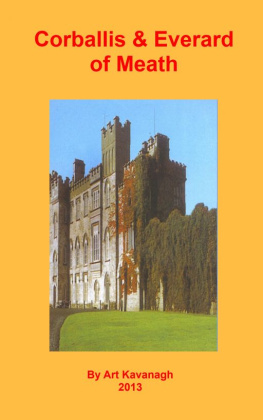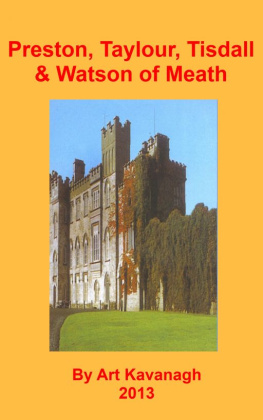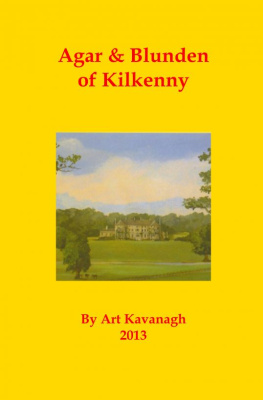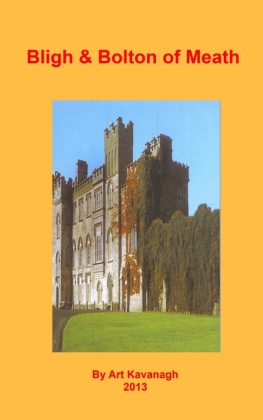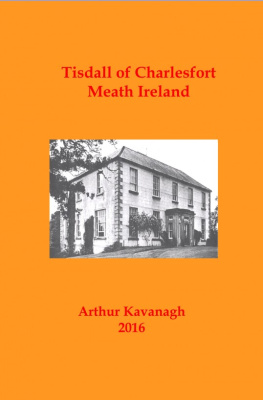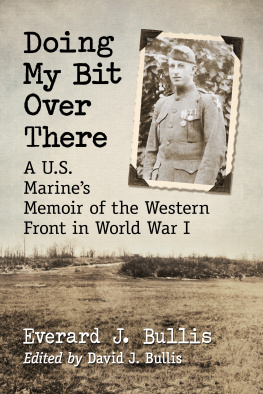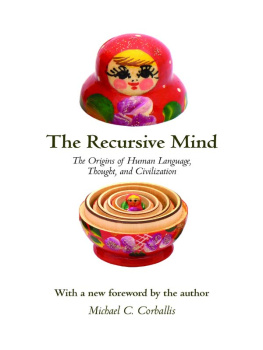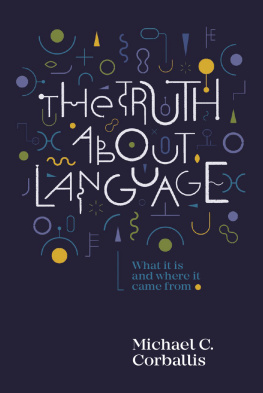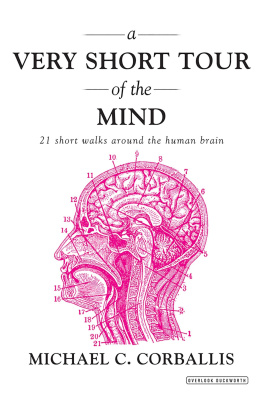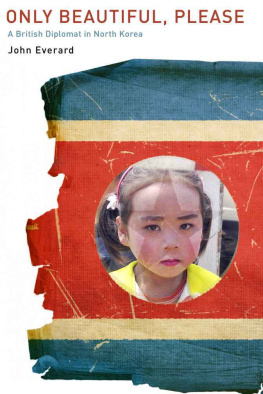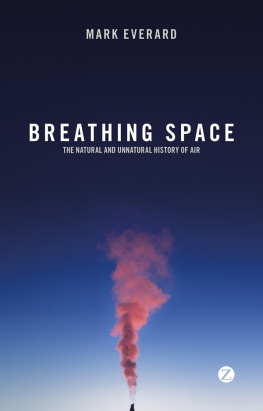Corballis & Everard
of Meath
By Art Kavanagh
2013
Corballis & Everard of Meath
Copyright Art Kavanagh 2013
First published 2013
Smashwords Edition
All rights reserved. Withoutlimiting the rights under copyright reserved above, no part of thispublication may be reproduced, stored in or introduced intoa database and retrieval system or transmitted in any form orany means (electronic, mechanical, photocopying, recording orotherwise) without the prior written permission of both the ownerof copyright and the above publishers.
Original illustrations/ Photographs
Corballis & Everard of Meath
Kavanagh, Art
Smashwords Edition, License Notes
This ebook is licensed foryour personal enjoyment only. This ebook may not be re-sold orgiven away to other people. If you would like to share this bookwith another person, please purchase an additional copy for eachrecipient. If youre reading this book and did not purchase it, orit was not purchased for your use only, then please returnto Smashwords.com and purchase your owncopy. Thank you for respecting the hard work of thisauthor.
Table ofContents
Corballis of Ratoath Manor
Corballis Timber Importers
Corballis Country Squires
The Ratoath Corballis Family
The Corballis Family of Rosemount
Everard of Randlestown
The First Everards in Ireland
The Everard Rebels in 1641 and 1690
The Everard Family in the18 th Century
The Everard Family in the19 th Century
Sir Nugent Talbot Everard
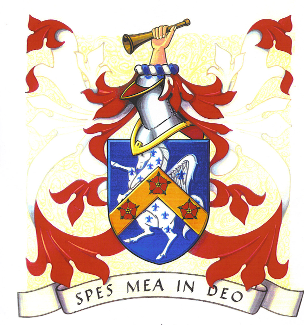
Corballis ofRatoath Manor
The Corballis family was remarkable for a number of differentreasons: they were substantial Catholic landowners prior to theperiod of the Williamite Wars; their entire property was forfeitedafter the defeat of the Jacobites and during the period of theworst of the Penal Laws; within a century they had managed to clawtheir way back financially and socially, while still retaining thereligion of their forefathers.
The ancestor of theCorballis family appears to have been aThomas Corbally from Dunshaughlin who married Ann Woodtown of Nuttstown in 1571. It would seem that his wife brought adowry of several farms of land in Jordanstown , Nuttstown and Palmerstown . Thesefarms were given to three sons Simon, Robert and Philip.
In 1690 RobertCorballis of Nuttstown , a Catholic, sided with King James II and fought at the Battle of the Boyne and was present at the capture of Trim . He was executed in 1694. He had two children who were madewards of the Preston family ofGormanston .
John Corballis of York Street and New Street in Dublin appears to have been the son of a RobertCorballis who had lands in Saggart .According to researches carried out by a family member, Dom Placid,a Benedictine monk, the Saggart estate consisted of lands inSaggart, Tussagard, Saggart Village, Johnville, Kingswood,Jobstown, Crooksling and Rathcoole. Under the Penal Laws the familylost their Saggart lands. The Corballis lands were granted tovarious government grantees including the Berwicks andRobertsons.
Johns wife was JaneMcManus . They had a number of children,the oldest of whom, John (1735-1805), married ElizabethMooney . John junior seems to have beenwell educated and his son Richard attested to this. John senior wasactively involved in promoting the education of Catholic childrenand in his will he made bequests to more than ten schools andchurches.
Corballis Timber Importers
JohnCorballis , his son John and his grandsonswere timber importers. They were the first Catholic timberimporters in Dublin . Their growing wealthmeant they could acquire properties and Richard, one of Johnsheirs, obtained the lease of Rosemount inClonskeagh in 1780 while James his youngerbrother got that of Roebuck House nearbyin 1787. The two sons Richard and James Anthony were well educatedand moved in high social circles. The family has a firearmscertificate issued to Richard Corballis in 1803 permitting him tobe the owner of a blunderbuss, one fowling piece and fourpistols.
Richard was given controlof the family business some time before his father died. John whodied in 1805 had been in bad health for a period. After his deaththe assets were divided evenly between the two sons Richard andJames Anthony (1770-1842) and his four daughters were provided forin Johns will. James Anthony, the second son of JohnCorballis (d.1805) was living inRoebuck House until he boughtRatoath Manor and part of Dunboyne in1813. He was already married at the time and had a youngfamily.
His wife was Anne Kenny,whose father owned properties in counties Meath andDublin . James and Anne were married sometime prior to 1802 and their children were reared in Roebuck Houseuntil they moved to Ratoath, in 1813. They had two sons and twodaughters. One of the sons and one of the daughters died unmarried.The other daughter married a Knaresborough from Co. Kilkenny and the eldest sonJames Joseph succeeded his father in Ratoath when James Anthonydied in 1842.
Corballis Country Squires
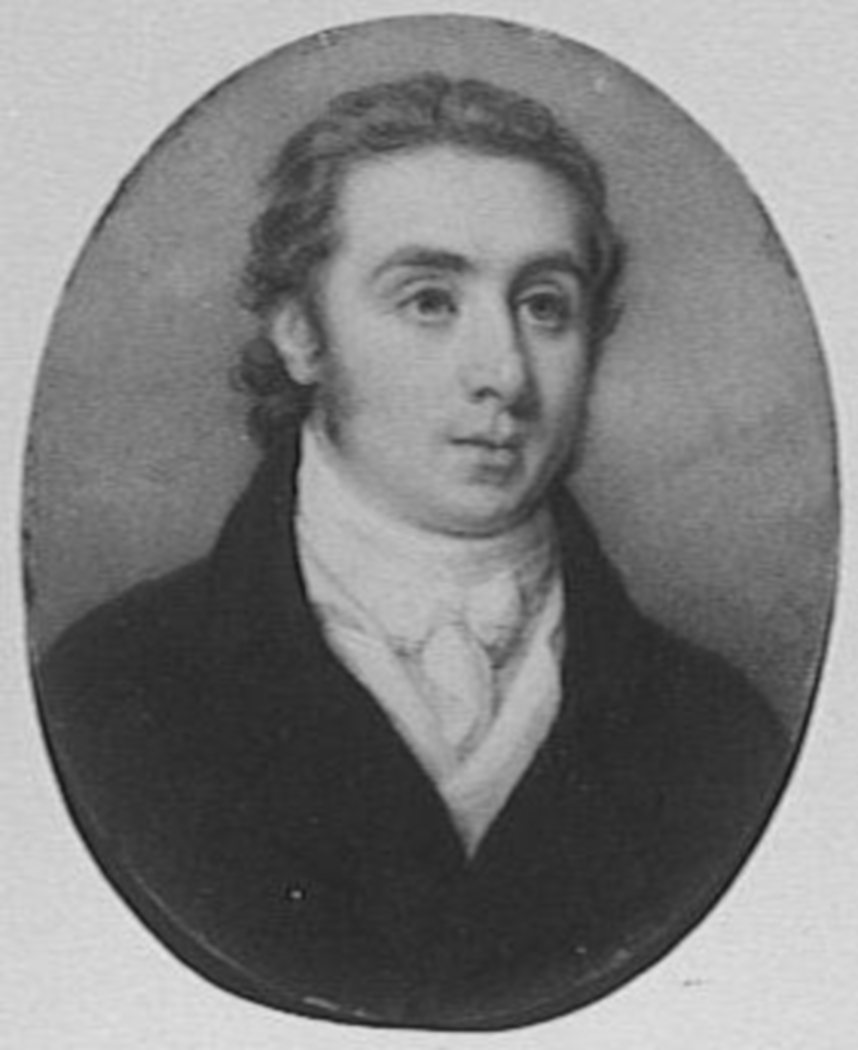
James AnthonyCorballis of Ratoath Manor
(photo courtesyCorballis Family)
James Joseph (1802- 1840),who was educated at Clongowes settled into the life of a countrysquire and was made a J.P. His wife was Mary Netterville Barron from Co.Waterford. James Joseph and Mary had twosons, who survived and two daughters - Emily who died unmarried in1927 and Elizabeth who died in infancy. The second son, Williambecame a Captain in the 17 th Foot and died at acomparatively young age in 1880. About the year 1822 James and hiswife commissioned the erection of the High Altar in St. Marys ProCathedral in Dublin in memory of JohnCorballis and his wife MaryMcManus . The sculptor was Sir PeterTurnerelli. Inscriptions were carved on the rear of the tabernacleand on the inside.
The eldest son James Henry(1835-1903) married Constance Jerningham, an English lady of gentlebirth in 1863. They were married in Brussels where the Jerninghamswere living and honeymooned in Paris . Theyreturned to Ratoath where they were met inthe usual fashion by the estate tenants who unharnessed the horsesat Moulden Bridge and dragged the carriage to the hall door of theManor House. James Henry moved out of Ireland in 1869 and lived invarious residences in Scotland . Theseincluded Reelig House, Knockrobbie, Moniack Castle, Nairn andInverness.
James Henry and Constancehad five sons and five daughters. Two of the daughters became nunsin English nunneries and three of them married. All three marriedEnglishmen and one, Laura, married Lt. General Sir WalterLeslie from Banffshire.
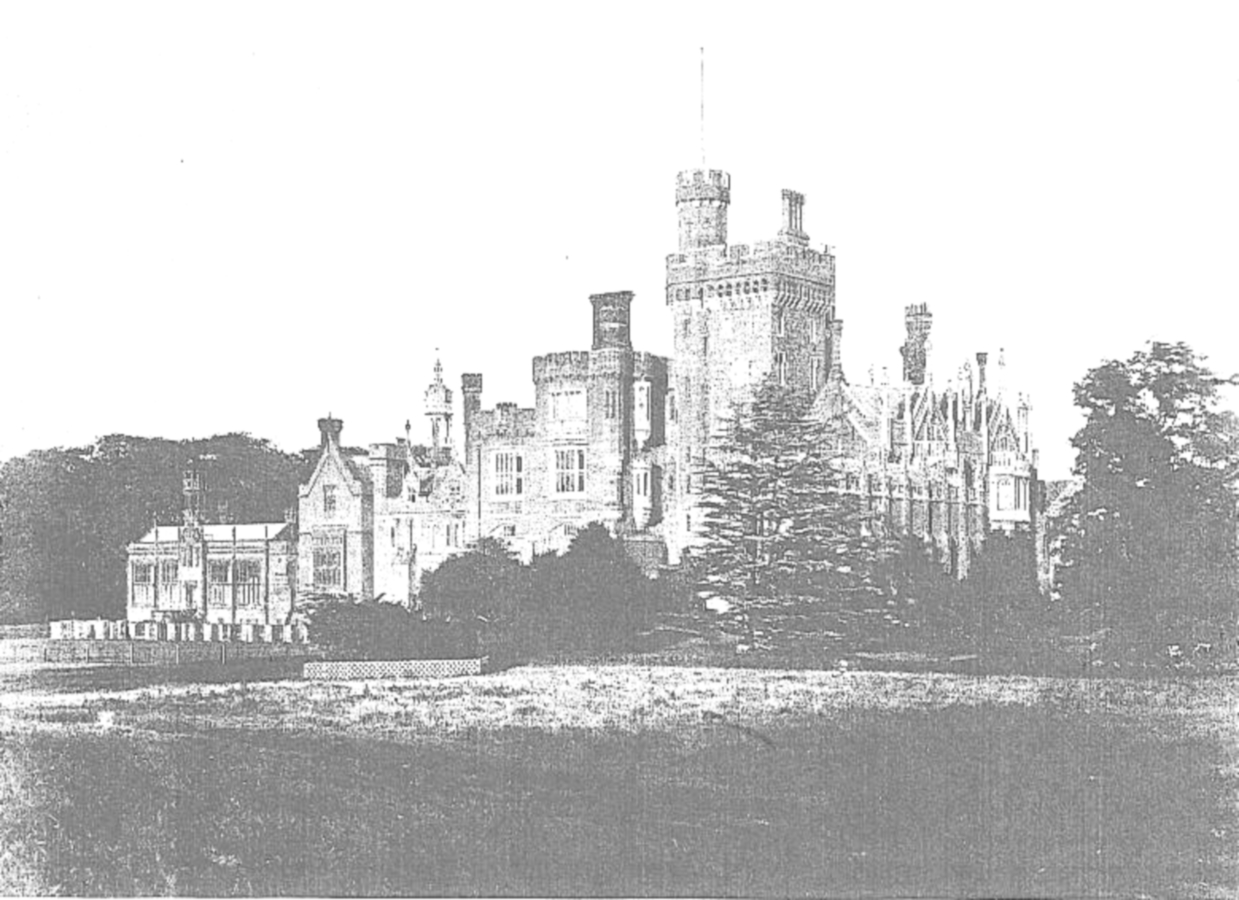
Cossey Hall (Norfolk)
(Photo courtesy Corballis Family)
All three ladies weremarried in the first decade of the 20 th century and these weddingsmust have proved to be a financial drain on the family finances asit was around this time that James Frederick, who succeeded toRatoath in 1903, began his correspondencewith his wealthy cousin Richard John, with a view to getting somehelp to overcome his problems. James Henry was very interested insport and wrote a book entitled Forty FiveYears of Sport . He died in 1903 and hiswife died in 1914. Both are buried in Kensal Green,London.

